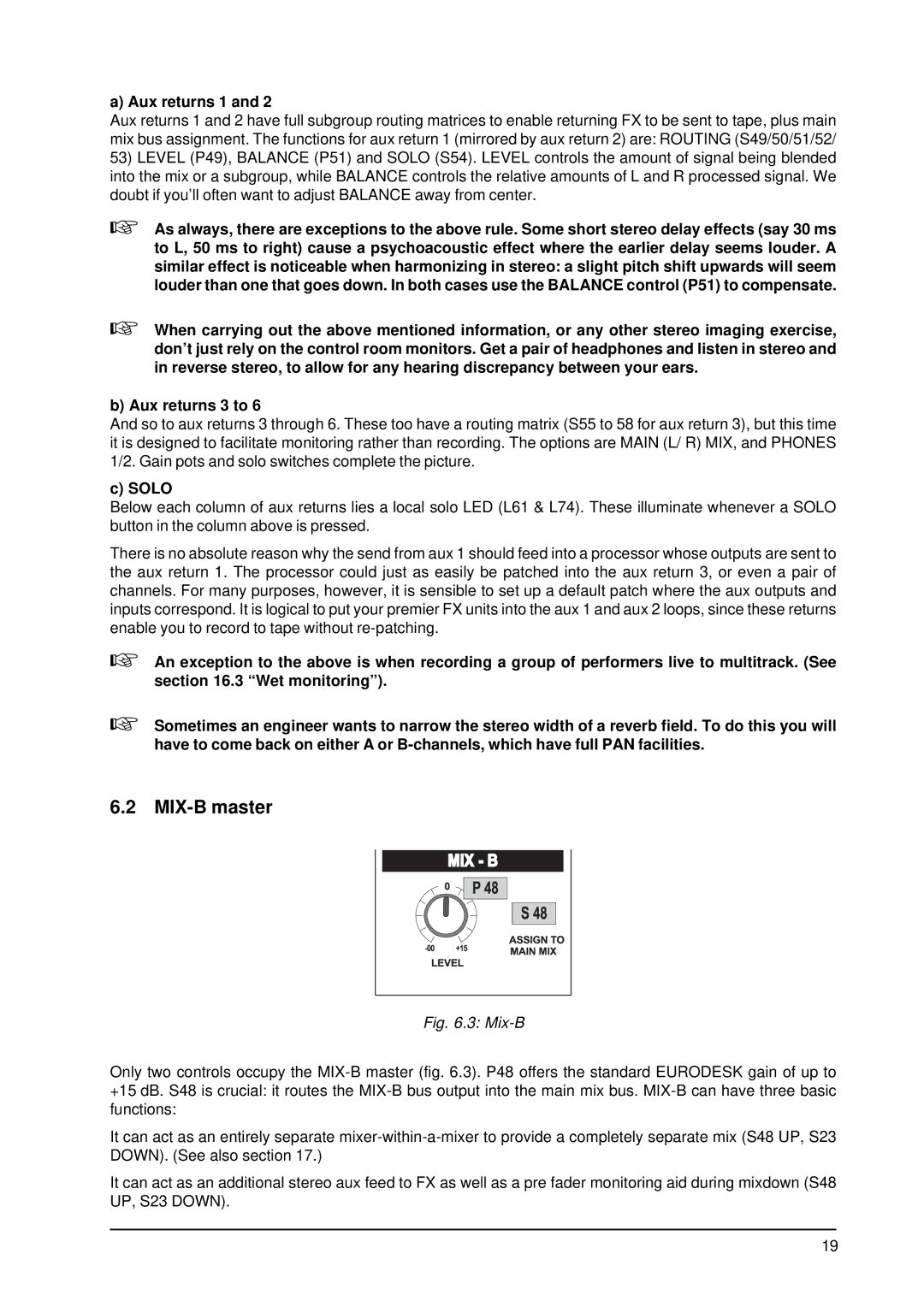
a) Aux returns 1 and 2
Aux returns 1 and 2 have full subgroup routing matrices to enable returning FX to be sent to tape, plus main mix bus assignment. The functions for aux return 1 (mirrored by aux return 2) are: ROUTING (S49/50/51/52/
53)LEVEL (P49), BALANCE (P51) and SOLO (S54). LEVEL controls the amount of signal being blended into the mix or a subgroup, while BALANCE controls the relative amounts of L and R processed signal. We doubt if you’ll often want to adjust BALANCE away from center.
+As always, there are exceptions to the above rule. Some short stereo delay effects (say 30 ms to L, 50 ms to right) cause a psychoacoustic effect where the earlier delay seems louder. A similar effect is noticeable when harmonizing in stereo: a slight pitch shift upwards will seem louder than one that goes down. In both cases use the BALANCE control (P51) to compensate.
+When carrying out the above mentioned information, or any other stereo imaging exercise, don’t just rely on the control room monitors. Get a pair of headphones and listen in stereo and in reverse stereo, to allow for any hearing discrepancy between your ears.
b) Aux returns 3 to 6
And so to aux returns 3 through 6. These too have a routing matrix (S55 to 58 for aux return 3), but this time it is designed to facilitate monitoring rather than recording. The options are MAIN (L/ R) MIX, and PHONES 1/2. Gain pots and solo switches complete the picture.
c) SOLO
Below each column of aux returns lies a local solo LED (L61 & L74). These illuminate whenever a SOLO button in the column above is pressed.
There is no absolute reason why the send from aux 1 should feed into a processor whose outputs are sent to the aux return 1. The processor could just as easily be patched into the aux return 3, or even a pair of channels. For many purposes, however, it is sensible to set up a default patch where the aux outputs and inputs correspond. It is logical to put your premier FX units into the aux 1 and aux 2 loops, since these returns enable you to record to tape without
+
+
An exception to the above is when recording a group of performers live to multitrack. (See section 16.3 “Wet monitoring”).
Sometimes an engineer wants to narrow the stereo width of a reverb field. To do this you will have to come back on either A or
6.2 MIX-B master
Fig. 6.3: Mix-B
Only two controls occupy the
It can act as an entirely separate
It can act as an additional stereo aux feed to FX as well as a pre fader monitoring aid during mixdown (S48 UP, S23 DOWN).
19
